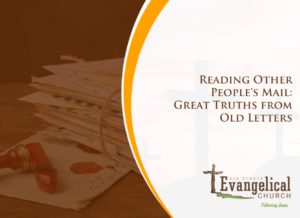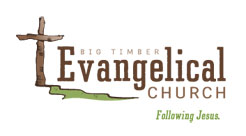Reading Other People’s Mail: 2 John – Day 1
Introduction to 2 John
Instructions in Conflict
One person described this little letter as “correspondence from the front.[1] It’s an interesting image to think about, but it makes sense when you understand the letters background. This letter was written in the aftermath of a conflict. The readers are those who are left in a local church after another group has torn them apart and taken a large group out of the church. This may have happened in one local church or it may have been a regional epidemic. 1 John seems to have been written to one large church or to all of the churches in a region. The churches all shared these letters over time.
How do we know that that this letter was to a different church? John introduction gives us some hints. He introduces himself as “the elder” (2 John 1). Elder is the Biblical term for the church pastor. It’s sometimes hard to figure out if elders were mostly the pastors of the churches or if they were 2-3 leaders who taught, provided oversight, and protected the church from false teaching. It seems that both models were present in scripture. John’s introduction seems to indicate that he was the lead elder of a group of churches.
The letter is addressed to “the chosen lady and her children…” (2 John 1). Who is the chosen lady? The truth is we actually don’t know. This introduction has been confusing for people over time. Some explanation might help.
The chosen lady is likely not a person but the church overall. The church is often referred to in scripture in feminine terms. In 1 Peter 5:13, Peter tells his readers “She who is in Babylon, chosen together with you, sends you her greetings…” The “she” that he is talking about is the church. Paul in Ephesians 5:25 tells husbands, “Husbands, love your wives, just as Christ loved the church and gave himself up for her…”. In addition, Jesus is referred to in Bible as the groom and the church is the bride (2 Corinthians 11:2; Ephesians 5:24). When God draws history as we know it to a close, believers are united with their savior at the Wedding Supper of the Lamb (Revelations 19:7-9, 21:1-2).
John’s reference to the chosen lady seems like coded language for a local church, probably a daughter church of the mother church where John is located. The lady’s children are the members of the local church. This language is actually Christian language not coded language, but to outsiders, it certainly seemed coded.
As you read 2 John this week, keep in mind John’s concern for the local churches under his care. Try to remember that they are a church under attack and the attacks are coming from people who used to be in the church. These new people left in conflict after challenge John’s authority and his teaching about Jesus. By all appearances, the “hate” John and all who stayed in the church.
This is such a short passage that you can read 2 John each day of the week and get real deep.
2 John – Day 1
Take a moment to read 2 John
The Bonds of Relationship
1 John 2 is one of the shortest books in the Bible. Its length is surprising given its intensity. John is short and to the point. One would likely say that he is even abrupt and blunt.
It’s not that he’s not friendly. He is very caring toward his readers. His love is clear and caring. Both he and his readers have something in common. You may have missed it on your first read, but their common bond is the truth.
M people are bound together by their shared beliefs, but I don’t think that what John is getting at here. When John says truth, he is talking about “the way and the truth and the life” (John 14:6). John followed Jesus from the very beginning. 1 John 1:1 (NIV) says, “That which was from the beginning, which we have heard, which we have seen with our eyes, which we have looked at and our hands have touched—this we proclaim concerning the Word of life.” All of John’s teaching and the focus of his passion are from Jesus. His words are from the source!
John wants his readers to understand that their common bond is the truth. That truth is in who Jesus is and what he has done. In his first letter to his readers he went so far as to say that the common bond is what unites them in fellowship with the Apostles—the eyewitnesses of the life and message of Christ (1 John 1:3). That bond is a horizontal fellowship with each other and a vertical fellowship with “the Father God, and his Son, Jesus Christ.” For John writing about this fellowship is joyful (1 John 1:4).
We get this same sense in the first 3 verses of his 2nd letter. John loves the people he is writing to and they share a deep love for Jesus, the truth, in the flesh. His greatest desire is for them to experience, “grace, mercy and peace” from God (2 John 3).
Application:
 Who are the people around you with whom you share a deep bond of fellowship because of Jesus?
Who are the people around you with whom you share a deep bond of fellowship because of Jesus?- John tells his readers, “Grace, mercy, and peace” will be with us from God. What does this mean and how does it apply to these relationships?
Consider writing down a key verse or verses from today on an index card or small piece of paper and carry it with you today. Look at it as often as you can as a reminder of what we learned today.
Possible Verses: 2 John 2-3
[1] Burge, Gary M. The Letters of John: the NIV Application Commentary from Biblical Text … to Contemporary Life. Zondervan, 1996.




